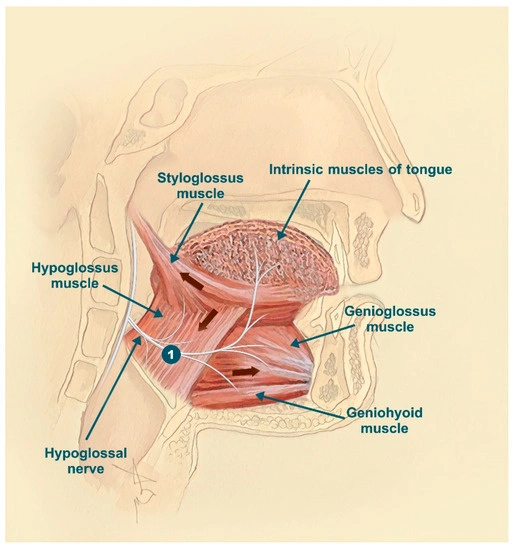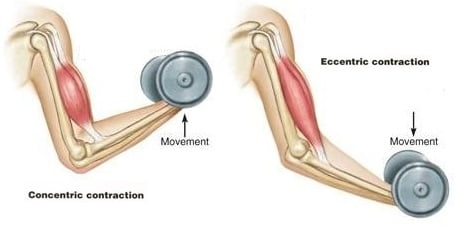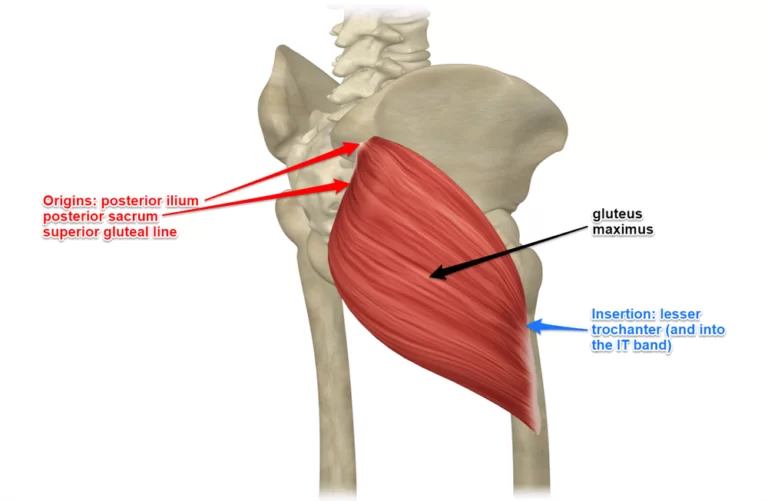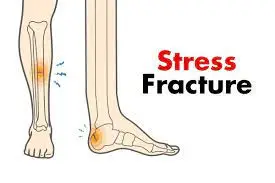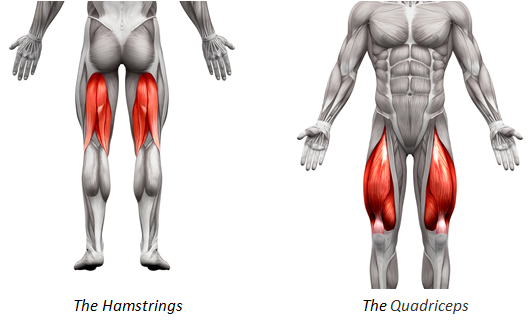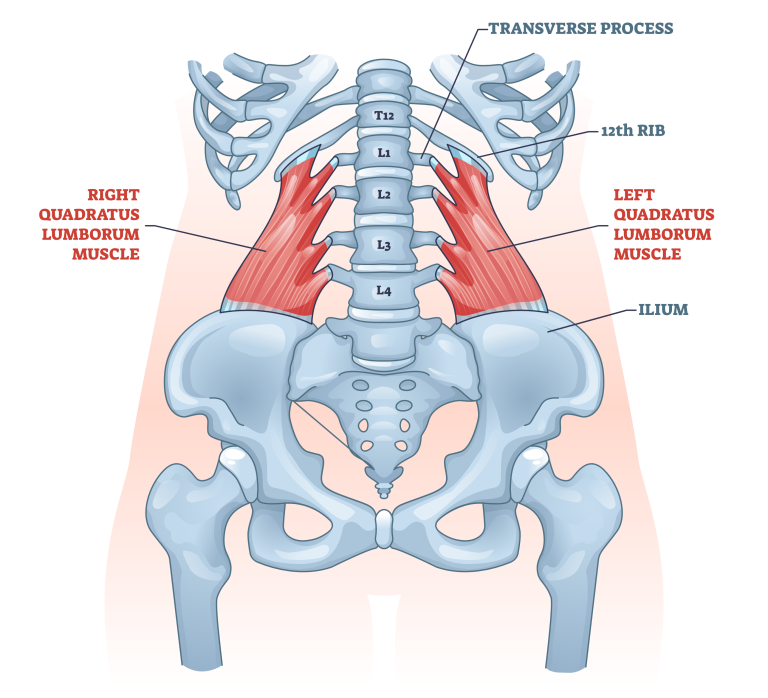Styloglossus muscle
Introduction
The human tongue is an organ that helps the process of digestion by facilitating the manipulation and movement of food particles during mastication and swallowing. The tongue is also essential in the exhibition of speech and essential for employing the sense of taste.
The styloglossus muscles are paired with the extrinsic muscle of the tongue. It coordinates with the additional extrinsic muscles of the tongue, including the hyoglossus muscles, the genioglossus muscle, and the palatoglossus muscle, to make the various movements of the tongue. The styloglossus muscles induce the lateral margins of the tongue to curve upwards, forming a furrow to permit swallowing following the mastication of food particles. The paired styloglossus muscles also function to retract and elevate the tongue in a posterior and superior direction.
Origin of Styloglossus muscle
It originates from (the anterior and lateral surfaces of) the styloid process of the temporal bone near its apex, and from the stylomandibular ligament.
Insertion of Styloglossus muscle
It diverges upon the side of the tongue near the dorsal surface of the tongue, blending with the fibers of the longitudinal inferior muscle anterior to the hyoglossus muscle.
The styloglossus muscles insert into the lateral aspect of the tongue, namely into the fibers of the intrinsic longitudinal muscles and between the two portions of the hyoglossus muscle. External and internal fibers of the styloglossus muscles also fuse with pieces of the superior pharyngeal constrictor muscle and the palatoglossus muscle, respectively, with three bundles traveling anteriorly towards the apex of the tongue and an inferior longitudinal bundle connecting the inferior fibers of the genioglossus muscle.
The fibers of the styloglossus muscles can be divided into anterior and posterior bundles. Anteriorly, the bundles run bilaterally and assemble at the midline of the floor of the tongue, forming an arch. The posterior bundles of the styloglossus muscles are divided into approximately 10 smaller bundles of fibers that enter the tongue. These smaller bundles approach between the inferior longitudinal intrinsic muscles of the tongue and the genioglossus muscle and eventually insert into the lingual septum.
The styloglossus muscle’s role is to retract and elevate the tongue in a posterior and also superior manner. Following mastication, these movements promote the passage of the food bolus toward the oropharynx.
Blood Supply
The styloglossus muscles acquire their blood supply from the sublingual branches of the lingual artery. The lingual artery is a direct branch of the external carotid artery; it carries off from the external carotid at the level of the greater horn of the hyoid bone.
After this, the lingual artery travels between the hyoglossus (superficial) and middle pharyngeal constrictor (deep) to provide blood to the tongue. Dorsal lingual arteries supply the bottom of the tongue, whereas deep lingual arteries supply the body of the tongue.
Nerve supply
The intrinsic and extrinsic musculature of the tongue is held by the 12th cranial nerve, the hypoglossal nerve, excluding the palatoglossus muscle, which is innervated by the 10th cranial nerve, the vagus nerve.
The hypoglossal nerve traverses superficially to the hyoglossus muscle. Impairment to the hypoglossal nerve influences ipsilateral deviation of the tongue, i.e., damage to the left hypoglossal nerve will induce deviation of the tongue to the left side.
Taste sense to the anterior two-thirds of the tongue is supplied through the chorda tympani branch of the facial (VII) nerve and the glossopharyngeal (IX) nerve to the posterior one-third; the glossopharyngeal nerve also gives somatic sensation to the posterior one-third of the tongue. The lingual nerve, a branch of the mandibular branch of the trigeminal (V) nerve, supplies somatic sensation to the anterior two-thirds of the tongue.
Function of Styloglossus muscle
The styloglossus pulls up the sides of the tongue to create a trough for swallowing. Functioning bilaterally (both styloglossus muscles contracting simultaneously) they also aid in retracting the tongue

Clinical Significance
As an extrinsic muscle of the tongue, the styloglossus muscles are innervated by the hypoglossal (XII) nerve. Thus, it is possible to evaluate the function of the hypoglossal nerve by testing the movements of the tongue. On examination, patients are introduced to protruding the tongue. Damage of the hypoglossal nerve causes ipsilateral deviation of the tongue, i.e., the tongue will turn to the side of the lesion or injury.
The course of the styloglossus muscles attaches the pharyngeal and submandibular spaces, forming the buccopharyngeal gap between the middle and superior constrictor muscles of the pharynx. This describes why a soft tissue infection of the submandibular space may spread to the pharyngeal space and surrounding structures. This spread may guide to extension into the adjoining retropharyngeal spaces; further spread into the thoracic cavity may result in mediastinitis, which is occasional but has a high mortality rate.
Ludwig’s angina, a potentially fatal contagious cellulitis of the submandibular, sublingual, and submental spaces, can cause significant swelling of the tongue and retropulsion of the tongue base, threatening the airway. Direct spread of the infection to affect laryngeal structures, such as the epiglottis, can result in edema and airway compromise.
In many ways, the tongue is important for the quality of life and for participating in human society. Without a functional tongue, verbal speech is next to impossible and oral feeding is prohibitively tough. As an extrinsic muscle, the styloglossus plays an essential role in tongue movement and may enhance oral and pharyngeal cancer management.
Surgical Considerations
Hypoglossal nerve stimulation is an alternative remedy for obstructive sleep apnoea (OSA). OSA often occurs due to a lack of tone of the tongue and pharynx within the airway and is repeatedly exacerbated by large tonsils, nasal obstruction, retrognathia, and adipose deposits in the neck.
It has been postulated that the muscle fibers in the posterior portion of the tongue have a higher fatigue tolerance compared to the anterior fibers. This describes the ability of the posterior tongue to contract for long periods during sleep to prevent upper airway collapse. Neurostimulation of the proximal hypoglossal nerve to improve tone in the tongue is an increasingly performed technique with a high likelihood of success in appropriately selected patients.
Surgical resection of malignant lesions of the tongue is another main source of tongue muscular dysfunction. The majority of tongue cancers are located on the lateral elements and the base, the resection of which can change tongue structure and function. Moreover, the hypoglossal nerve can be injured in such surgeries, resulting in a malfunction of the extrinsic muscles of the tongue, excluding the palatoglossus muscle, which is innervated by the vagus (X) nerve.
In some cases, a small partisan glossectomy may cause only limited, temporary tongue weakness, but hemiglossectomies or more extensive resections have a hugely influential impact on a patient’s quality of life due to the reduced capability to speak and swallow. Reconstruction with free soft tissue transfer is often required, but while these approaches may provide bulk that improves swallowing and potentially articulation, the preoperative function does not generally return after major surgery.
Intraoperatively and preoperatively, the styloglossus muscles can play an important role in characterizing the location of tumors, especially squamous cell carcinomas, and therefore facilitate staging and accurate prognosis. Invasion of the styloglossus muscles on magnetic resonance imaging has resulted in the up-staging of some tumors that were initially thought to be insignificant and aggressive.
Resection of the styloglossus muscles during a transoral procedure for squamous cell carcinoma of the lateral oropharynx exposes many vascular structures, and thus a transcervical approach may be preferable. The possible use of the styloglossus muscle in staging for squamous cell cancers of the lateral oropharynx has important implications for surgical oncology of the head and neck, particularly concerning the conservation of speech and swallowing function.
FAQ
Where does the styloglossus muscle come from?
The styloglossus muscle is an extrinsic muscle of the tongue, and its origin in the styloid process of the temporal bone is well established.
What cranial nerve Innervates styloglossus?
The hypoglossal nerve innervates all the intrinsic muscles and all except one of the extrinsic muscles (genioglossus, styloglossus, and hyoglossus) of the tongue.
What role does the styloglossus play in swallowing?
The styloglossus muscle causes the lateral margins of the tongue to turn upwards, forming a furrow to permit swallowing following the mastication of food particles. The paired styloglossus muscles also work to retract and elevate the tongue in a posterior and superior direction.
What is the attachment of the styloglossus muscle?
The styloglossus muscle is shaped as a thin line that originates from the anterolateral aspect of the styloid process of the temporal bone and the nearby stylomandibular ligament. To contact the tongue and insert into posterolateral aspects, it passes through the oropharyngeal triangle.
Where does the styloglossus muscle come from?
The styloglossus muscle is an extrinsic muscle of the tongue, and its origin in the styloid process of the temporal bone is well established.
What is the purpose of the styloglossus muscle?
The styloglossus muscle allows to lift of the lateral edges and retracts the tongue. The hyoglossus muscles induce retraction as well as depression of the tongue. The genioglossus muscles protrude from the tongue. The palatoglossus muscles elevate the posterior portion of the tongue.

